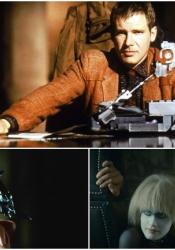Ridley Scott, Dir., Blade Runner (1982)
Summary
Set in a gritty—yet technologically prosperous—Los Angeles, in the year 2019, Ridley Scott’s Blade Runner follows ex-cop Rick Deckard as he endeavors to track down a group of bioengineered super-humans known as Replicants. Based on physical appearance alone, Replicants are indistinguishable from humans. However, Replicants, particularly those of the banned Nexus-6 model, have superior physical and mental abilities, accompanied by a general lack of empathy. As he hunts down the rogue Replicants, Deckard finds these differences becoming less and less distinct. The line between human and Replicant blurs, and Deckard must question everything he knows about his own reality.
Humanity in Blade Runner
Several times over the course of the movie, the characters, as well as the audience, are compelled to consider what it truly means to be human. Replicants such as Rachael are implanted with false memories and live under the belief that they are human. It is hotly contested whether or not Deckard himself is a Replicant. If he is, there is the implication that any “human” featured in the film could unwittingly be a Replicant. What exactly is the difference between a human and a Replicant that is convinced it’s a human?
Additionally, the rogue Nexus-6 Replicants are driven by a very human motivation: survival. Nearing the end of their built-in four-year lifespan, the Replicants seek out their creator in a last-ditch effort to save themselves. This fear of mortality is inherent in humans. Its use as a driving motivation for the Replicants suggests that there might just be some humanity in them.

